Night School at Wally’s
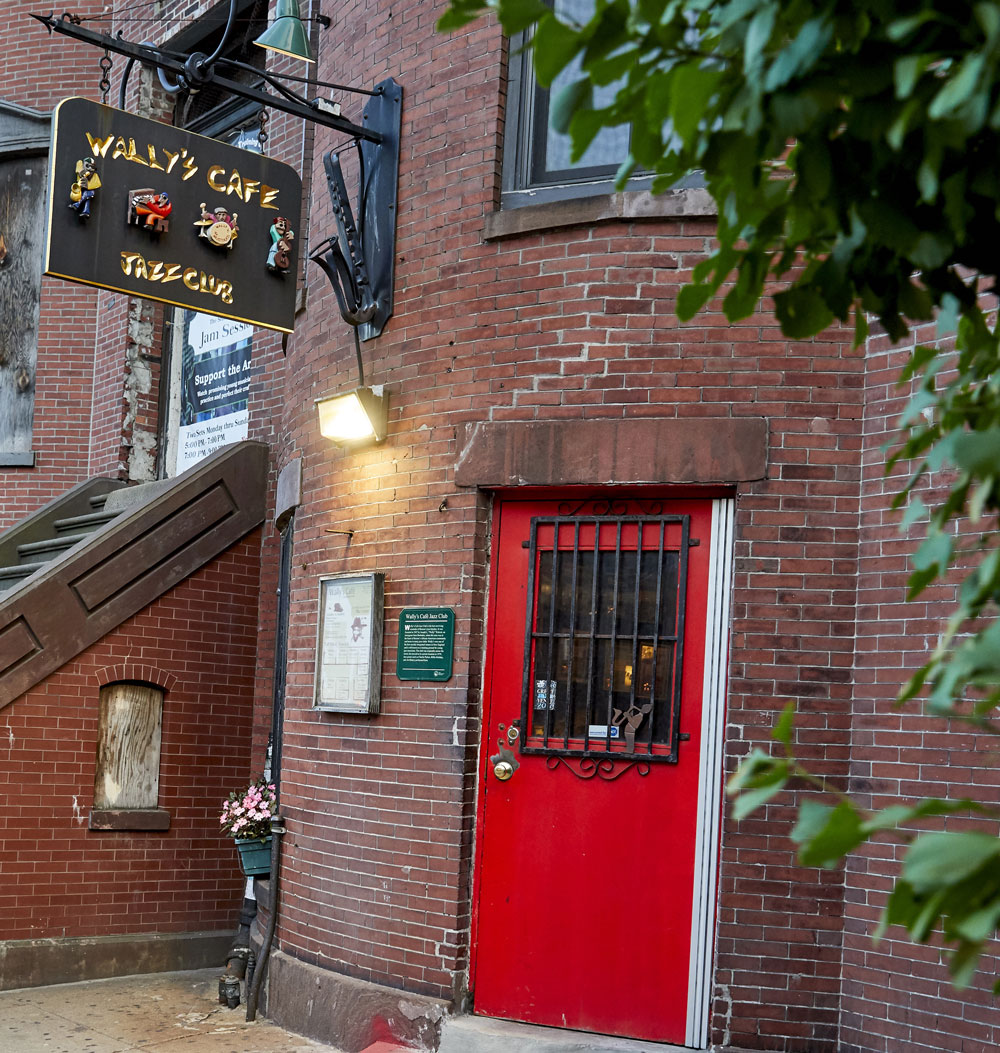
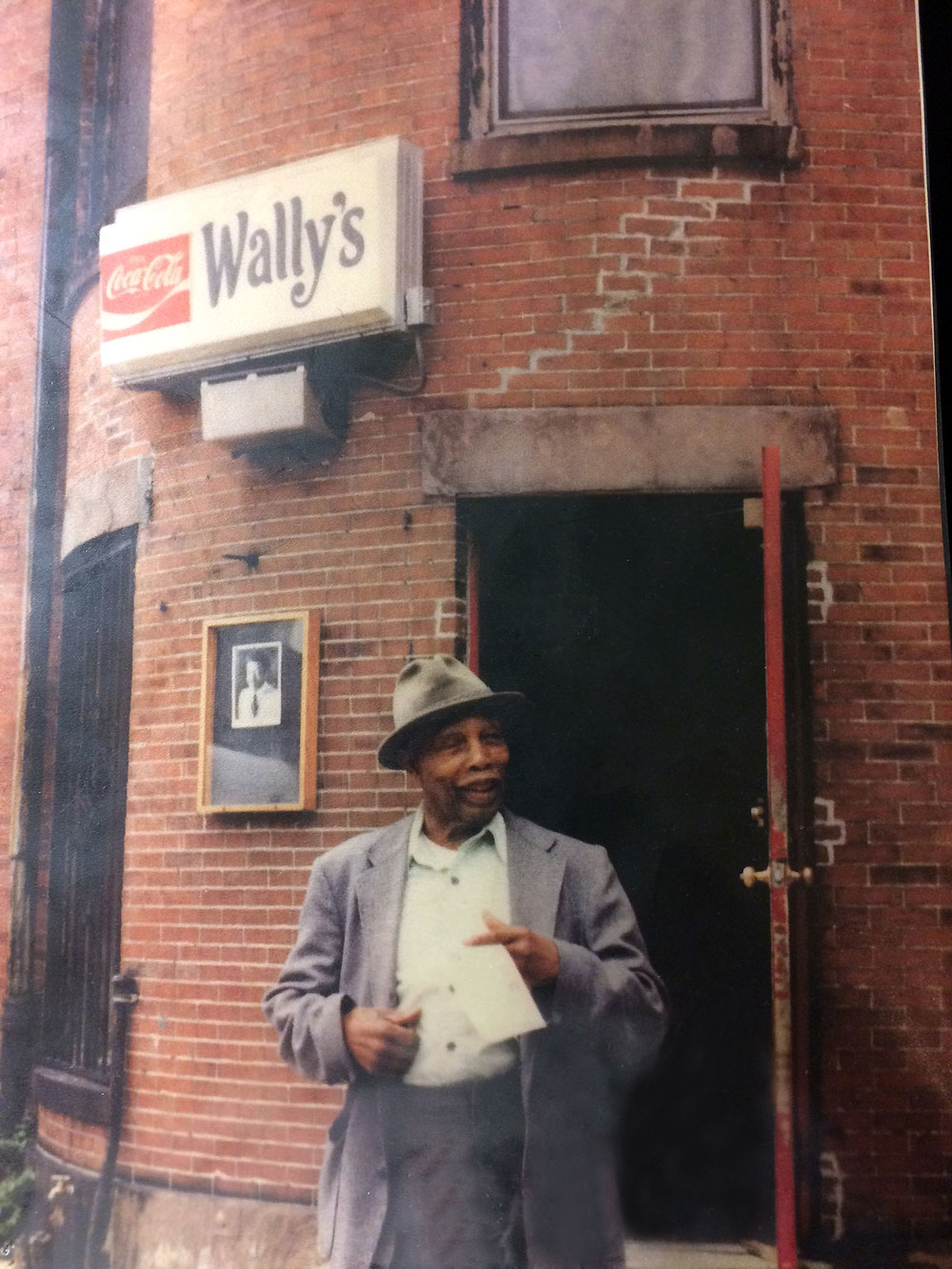
Joseph “Wally” Walcott
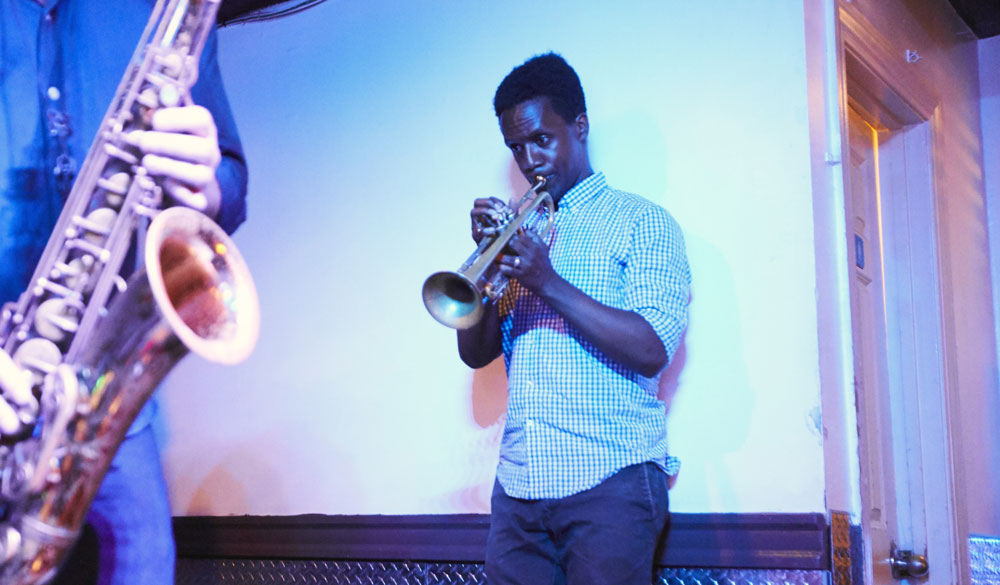
Faculty trumpeter Jason Palmer leads his band on Friday and Saturday nights and has recorded two live albums at Wally’s.
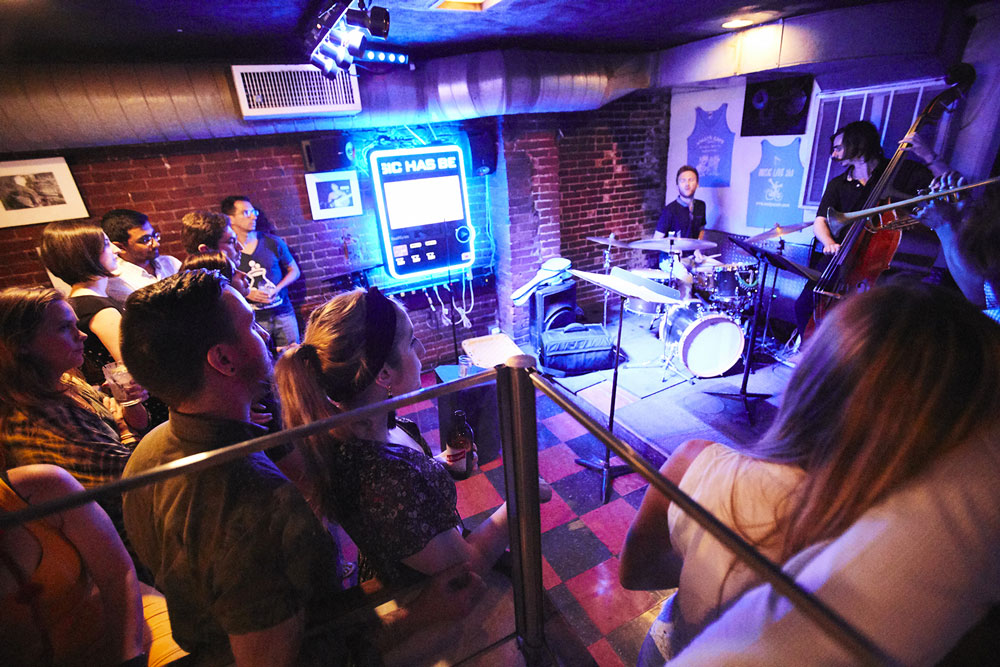
Weekend nights at Wally’s draw capacity crowds.
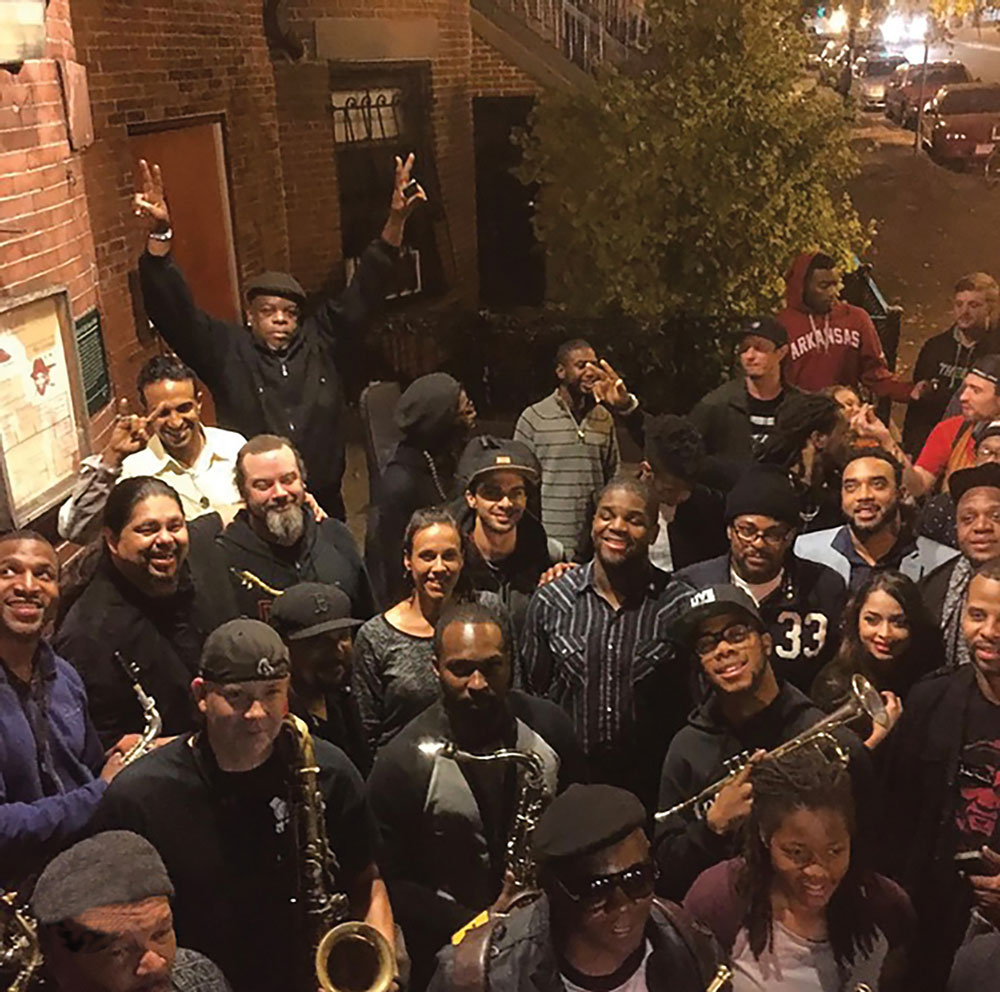
Assistant professor Amy Bellamy (pictured center, left) on a memorable night when members of Stevie Wonder’s back up band showed up to jam at Wally’s.
Berklee boasts several excellent performance spaces, but there’s a small nightclub a few blocks from campus that provides a brand of music education that no school can. “I call it Wally’s University,” drummer Nikki Glaspie ’04 says, whose credits include gigs with Beyoncé and Kanye West. “I had two different lives: the day job and the night shift. It allowed me to take what I was learning during the day and see how it worked, how it translated.”
Founded in 1947, Wally’s Café Jazz Club is nearly the same age as Berklee, and has, throughout its history, acted as a proving ground for young musicians; a steady gig for students, teachers, and locals; and a hideaway where legendary artists—such as Coleman Hawkins, Sarah Vaughan, and Oscar Peterson—would sit in late at night after performing in nearby concert halls.
Wally’s, which hasn’t changed much since its early days, continues to be a critical resource for serious musicians. The nightspot draws passionate and appreciative live music fans who show up every night to listen and encourage artists to make music that everyone in the room will feel compelled to talk about the next day.
“When you get on that bandstand, you start figuring out how things are supposed to feel,” says New Orleans jazz luminary Donald Harrison ’81, who at one point led four Wally’s sessions per week. “You pay attention to the audience and start to figure out how you become one with an audience. That’s the main thing that musicians need to have besides learning the music. We’re all in this thing together.”
The mentorship model has always been at the heart of a Berklee education, and Wally’s has consistently extended that approach, but with a twist. Students who are old enough to be admitted (everyone must show ID to be admitted) may get to hear their professors perform, but they’ll also take in some of the best veteran players in the Boston area. Many alumni reported being most inspired by Berklee students or alumni who were just a year or two older than them.
“They’re Here!”
Adam Deitch ’98, cofounder of the adventurous funk band Lettuce and an acclaimed drummer and producer, spoke with reverence about slightly older Berklee students he heard at Wally’s during the mid-1990s. They included bassists Reuben Rogers ’94 and Chris Loftlin ’92.
“We would freak out. ‘Oh my God, they’re here!’ It felt like Miles Davis and Charles Mingus had just walked in,” says Deitch of Rogers, Loftlin, and their bandmates. “We would go to Wally’s and literally study for five hours watching their bands. They were going for broke, trying to break through to another level. If you missed it, you felt sick.”
Within a year or two, others would say the same about Deitch and his Lettuce bandmates, whose original members met at Berklee and built their sound and fanbase with a Wally’s gig that ran for several years. Deitch also spoke highly about the influence and inspiration of other musicians, including the late Berklee faculty bassist Lenny Stallworth ’87, as well as guitarist Jeff Lockhart, who joined the faculty seven years ago. Stallworth and Lockhart, along with Craig “Butta” Glanville ’89, were three performers at the core of Wally’s move to feature funk on a regular basis. That later led to booking blues and Latin music on alternate nights. Glanville, whose uncle was Dizzy Gillespie, was the “designer” of funk night, according to Lockhart.
Offering an eclectic range of music wasn’t new for Wally’s late founder, Joseph “Wally” Walcott, who showcased a range of performers in the club’s early days, including many of that era’s popular chitlin circuit acts. Walcott was a forward-thinking club owner who sought to treat musicians fairly and to provide a place for anyone in the community to go, whether as a listener or performer.
“In that time period you had clubs that were segregated,” says Paul Poindexter, one of Walcott’s grandsons, and currently one of the club’s managers. “My grandfather created a spot where everyone could come. It didn’t matter what color you were.” Wally’s was Boston’s first nightclub licensed to an African American. “Another thing he taught me back in the day was that he always paid his musicians,” Poindexter says. “My grandfather had a reputation for that. If the place was empty, the musicians still got paid.”
Being a family business has provided Wally’s not only with a continuity in business philosophy, it has fostered a family feeling among club management, performers, and regulars. Several former Berklee students cite Poindexter, as well his brothers Frank and Lloyd, and their mother Elynor, as supportive and nurturing figures who always sought to provide an environment where musicians could experiment and grow.
One alumnus, Neil Jacobson ’99, now president of Geffen Records, cites Poindexter as a highly influential mentor. Jacobson was also one of several alumni who said that one of the club’s most important elements was the flip side of nurturing. If you weren’t prepared as a performer, Jacobson shares, you didn’t last long. He told a story about one Berklee drummer and bandleader who would interrupt his band at Wally’s if a player was off his or her game.
“I would watch [this drummer] tear up his own musicians if they messed up,” Jacobson says. “He would stop, put his sticks down, turn to the bass player, and say, ‘What in the hell are you doing?’ It was crazy. So you had to be on it. Because of that pressure, there was this feeling when you were at Wally’s you were watching the best of the best.”
The Wally’s ethos of excellence raised Jacobson’s standards for evaluating musicianship, a valuable asset in his career as a record executive. And it might also explain why so many Berklee alumni who combined their classroom work with the demands of steady gigging at Wally’s have gone on to successful careers. Other than the musicians mentioned here, the list also includes acclaimed saxophonist Branford Marsalis ’80, Louis Cato ’04 (a member of the house band for the Late Show with Stephen Colbert), Jeff Bhasker ’99 (Grammy-winning record producer), Mark Kelley ’02 (bassist for the Roots), and countless others.
One of the most widely admired bandleaders on the current Wally’s roster is Berklee assistant professor of ensembles and trumpeter Jason Palmer. His residency on Friday and Saturday nights has become one of the most popular jazz hangs in Boston. Palmer, who recently released two volumes of live Wally’s recordings, credits the venue with providing a strong network of musicians, a place to air out new compositions, and an opportunity to develop as a bandleader.
Wally’s Playlists
“The repertoire makes the biggest difference,” Palmer says when asked about his approach to leading a band. “It’s about the flow of songs in a set. Showing that you’re having fun on stage makes everything worth it. The tunes have a lot to do with it. You want to highlight the players’ strengths. What key is best for the tenor player? What tempo makes the drummer sound best?”
Several alumni spoke with passion about Wally’s set lists, stating that the songs and arrangements one hears at the club are so distinctive that musicians use them as a way of connecting when they’re far from Boston. “I was at Jazz Fest in New Orleans a couple months ago, and there were lots of musicians there who have been in Boston or went to Berklee,” says Amy Bellamy, assistant professor of harmony and coleader of the Tuesday night funk sessions at Wally’s. “We’re like, ‘Let’s play a Wally’s set.’ It’s become a genre. The playlist is very specific,” she states before mentioning a few tunes, such as Marcus Miller’s “Panther,” Herbie Hancock’s “Hang Up Your Hang Ups,” Adam Smirnoff’s “Flu the Coop,” and War’s “World Is a Ghetto.”
Saxophonist Neta Raanan ’16M said that her band often tackles “rare gems” composed by greats like Jackie McLean, Ornette Coleman, and Thelonious Monk. Her repertoire choices were influenced by Palmer and by trumpeter Cosimo Bono ’18M, ’17, who led the early Friday night jazz session for five years before handing it off to Raanan in the spring of 2018, she says.
Bono’s invitation to Raanan to become leader of the session is typical of how transitions occur at Wally’s. Several of the musicians interviewed for this article gave examples of how it was a young bandleader rather than the club manager who typically selected a new musician to whom to hand off one of the coveted slots as a night’s session leader. In many cases, the incoming or outgoing bandleader, or both, would be a current or former Berklee student. For several alumni, earning the opportunity to take control of a night proved to be a pivotal moment in their developing careers.
Learning to Lead
Vibraphonist and former faculty member Cecilia Smith ’84 was one of the first female musicians to assume control of a night at Wally’s. Her era was during the early to mid-1980s, a time when Wally’s was a smoke-filled bar and the neighborhood was rougher than it is today. “It could get really wild there,” Smith recalls. “There was a little edge, but it was good. I loved that. I was pretty green, from the suburbs of Cleveland.”
She adds that club matriarch Elynor Poindexter helped pave the way for her evolution. “I got tired of guys not letting me play,” Smith said. “It taught me a lot about the politics of men and being able to play and hang with them on a certain level.” After Elynor gave her Thursday nights, Smith not only developed her command in leading a band composed mostly of men, she worked hard to strengthen Boston’s music-making community by teaching music for public schools and nonprofits, and finding an affordable Mission Hill apartment where she and several other musicians lived.
But for Smith, as for others, the benefits of playing at Wally’s always came back to the music. “I was very young but had a place to play and work out stuff and build a reputation,” she says. “Improvisation is about executing ideas and telling real stories as an instrumentalist. I wouldn’t be the player I am if it weren’t for working out ideas as an improviser there with people that play well.”
One of Smith’s bandmates during the early 1980s was drummer Ron Savage ’85, who is now dean of Berklee’s Professional Performance Division, a position that gives him particular authority on the Wally’s effect. “Having an impact on audiences is one of the hardest things to teach at music school,” Savage says. “It’s so intangible. There’s nothing in your scale book or theory classes that tells you how that’s supposed to happen.”
After first learning about connecting with audiences as a young r&b drummer in the rural South, Savage says that his Wally’s experiences solidified and deepened his capacity for connection. “Playing there helped me learn that being an effective musician is about living as a good person and member of a community,” Savage opines. “I play music out of my life to connect with people through their lives. While I was playing [at Wally’s], life was playing out in front of me. You felt their pain, their happiness, their relationships.”
Such spiritual benefits notwithstanding, guitarist Angie Swan ’05 cited a number of practical lessons she learned when she started playing at Wally’s in 2003. “It was one of my first paying gigs,” Swan states. “You learn how to how to set up for a gig, deal with stage fright and get past it, and collect your money at the end of the night. Playing with people who are way more advanced than you, you’d get your butt kicked there. It forced you to shed and play better.” Notably, Swan played a tune on the Wally’s stage during her student days with famed bassist Meshell Ndegeocello.
On a Tuesday night in late July 2018, Swan went to Wally’s, just after playing at the Blue Hills Bank Pavilion with former Talking Heads frontman David Byrne. Upon hearing about Wally’s from Swan, Byrne rode his bicycle from the Boston waterfront venue all the way to the South End to hear Swan sit in with Amy Bellamy’s band.
“He thought it was a pretty cool place,” Swan said. “I showed him the pictures on the walls, and he sat and listened. We played three tunes. He had a good time.” And then Byrne rode his bike from Wally’s back to his hotel.
People who were there that night will remember hearing music made by stage-tested musicians while one of the most famous artists on the planet took it all in. Decades ago, it might have been Roy Haynes or Billie Holliday watching from a Wally’s chair. In July, it was Byrne. On other nights, it might be simply a few people from the neighborhood. Regardless, there likely will be Berklee musicians on stage, experimenting, improvising, and taking that brave step from practice room to stage.




